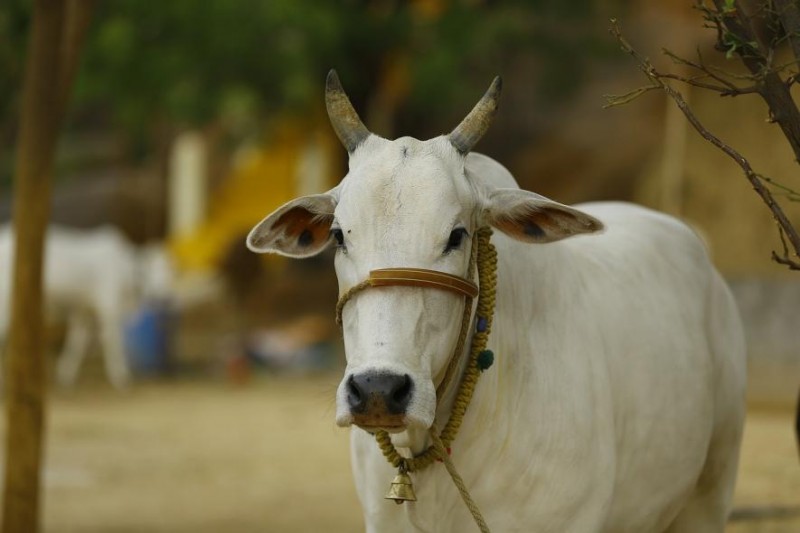
North India, comprising states like Uttar Pradesh, Bihar, and Madhya Pradesh, is commonly known as the "Cow Belt." The term originates from the region's deep cultural and historical connection with the revered bovine.
North India's vast landscapes have been traditionally intertwined with agrarian practices, where the cow plays a pivotal role. This connection between the people and their bovine counterparts has led to the region earning the moniker of the "Cow Belt."
In the Indian context, cows are not merely livestock; they are revered as sacred beings. The roots of this reverence extend into religious and cultural beliefs, making the cow an integral part of daily life.
Cows hold significance in Hinduism, where they are considered holy and symbolize the divine manifestation of Mother Earth. This cultural significance contributes to the controversy surrounding the treatment and use of cows.
Over the years, various cow protection movements have emerged, advocating for the safeguarding of cows. These movements often find themselves in conflict with those who view cows through an economic lens. The clash between traditional reverence and economic interests creates a complex and controversial landscape.
Cow protection movements aim to preserve the cultural and religious sanctity associated with cows. They call for stringent measures against cow slaughter, reflecting the deep-rooted emotional and spiritual connection that many communities share with these animals.
Cow urine, known as "gomutra" in Sanskrit, has been a subject of interest in Ayurveda, the ancient Indian system of medicine. Ayurveda attributes various health benefits to cow urine, including its purported efficacy in treating ailments.
Advocates of Ayurveda emphasize the holistic healing properties of gomutra, promoting it as a panacea for numerous health issues. Despite these claims, skepticism remains prevalent, especially within the scientific community.
To comprehend the veneration of cows, one must turn to Hindu scriptures. These texts elucidate the symbolic and spiritual importance assigned to cows, portraying them as embodiments of purity and selfless service.
In the Rigveda, one of the oldest sacred texts, the cow is celebrated as a symbol of non-violence and abundance. Such scriptural references form the basis for the profound respect accorded to cows in Hindu culture.
In traditional Indian society, cows are not merely animals; they symbolize prosperity and are considered a source of various necessities. The cow's role extends beyond religious rituals, encompassing economic and agricultural aspects.
Cows are valued for their contribution to agriculture, providing milk, manure, and labor. This multifaceted role adds layers to the controversy, as the economic importance of cows clashes with their sacred status.
While Ayurveda extols the virtues of cow urine, the scientific community remains skeptical. The traditional knowledge embedded in Ayurveda encounters the rigors of scientific scrutiny, leading to a dichotomy of beliefs.
Ayurvedic proponents argue that gomutra contains potent medicinal properties, attributing its efficacy to a holistic balance of elements. However, the lack of robust scientific evidence makes it challenging to establish these claims in a universally accepted manner.
From purported health benefits to potential risks, understanding the scientific perspective on cow urine is crucial for informed discussions. Proponents claim benefits ranging from improved digestion to cancer prevention, while critics caution against unfounded beliefs and potential health risks.
Scientific studies exploring the components of cow urine and their effects on the human body present a complex picture. The challenge lies in bridging the gap between traditional wisdom and contemporary scientific standards.
The term "Cow Belt" finds its roots in the historical and linguistic context of North India. It encapsulates the region's strong agrarian traditions, where cows are not only revered but also play a pivotal role in the agricultural landscape.
The historical context reveals that the term emerged as a colloquial expression, reflecting the deep cultural and economic ties between the people and their bovine companions. Over time, it evolved into a widely recognized descriptor for the region.
Beyond culture and religion, the economic role of cows in the agrarian landscape of North India contributes to the "Cow Belt" designation. Cows are essential for plowing fields, providing organic manure, and sustaining dairy farming.
The economic significance intertwines with cultural practices, creating a unique blend where the spiritual and the practical aspects coexist. This dual role further amplifies the controversies surrounding the treatment of cows.
As India treads the path of progress, finding a balance between traditional beliefs and modern practices becomes imperative. The cow controversy encapsulates this struggle, representing a clash between age-old customs and the demands of a rapidly evolving society.
The challenge lies in respecting the deep-rooted traditions that hold the cow in high regard while embracing modernity that often views cows through an economic lens. Striking this balance is essential for sustainable development and societal harmony.
To move beyond controversies, fostering open and inclusive dialogues that consider diverse perspectives is essential for societal harmony. Engaging in meaningful conversations that respect differing viewpoints can lead to a more nuanced understanding of the complexities surrounding the cow debate.
Inclusivity in dialogue involves acknowledging the cultural, religious, and economic dimensions, allowing for constructive discussions that bridge gaps rather than deepen divides. This approach is crucial for fostering unity in a diverse and culturally rich nation like India.
In unraveling the controversy over cows and cow urine, it's evident that the issue extends beyond religious sentiments. Navigating this complex terrain requires a nuanced understanding of cultural, historical, and scientific dimensions.
The cow, with its symbolic, cultural, and economic significance, serves as a microcosm of India's intricate tapestry. As the nation progresses, it grapples with the challenge of preserving tradition while embracing modernity. The controversy over cows is not merely a clash of beliefs; it's a reflection of the dynamic and ever-evolving identity of India.
You will get these benefits by eating figs on an empty stomach
Adopt these habits to stay active throughout the day
Tragic Suicide: Young Man Takes His Own Life After Posting Obituary on Instagram